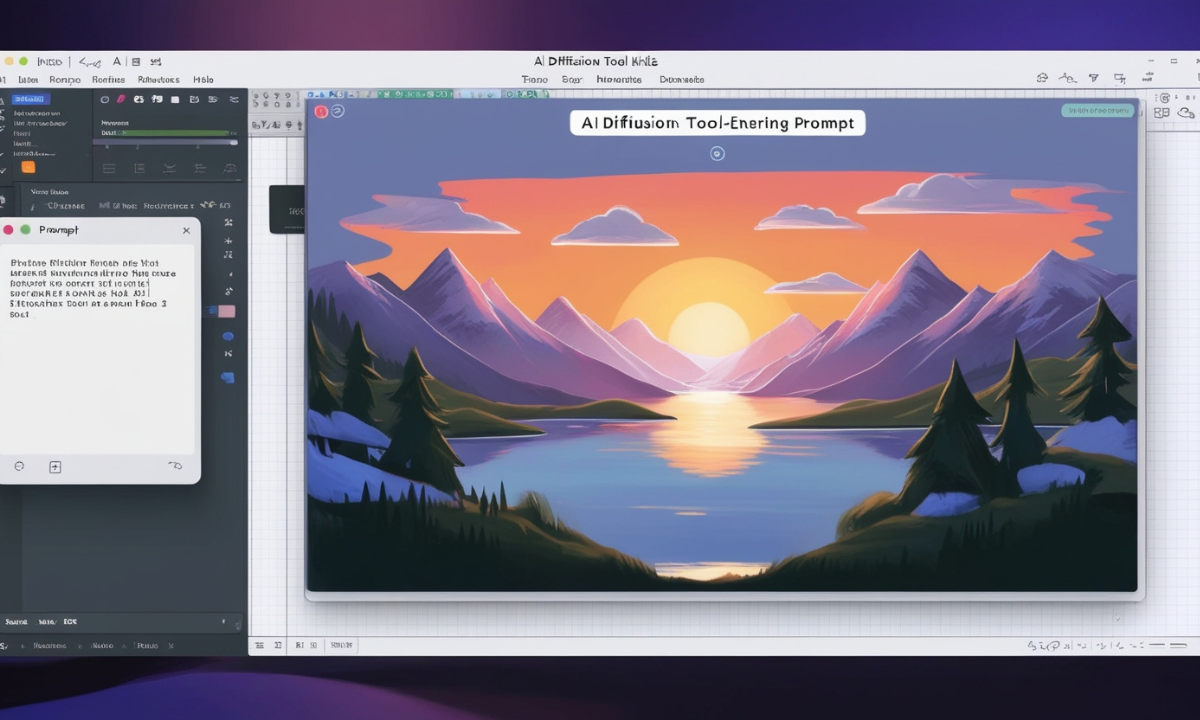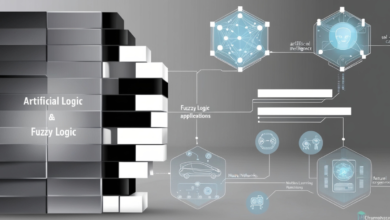
Intro about How to do hires fix in krita ai tool
How to do hires fix in krita ai tool, Krita is a widely known open-source digital painting software that is used by artists to make concept art, illustrations, comics, and animations. It comes with brushes, layers, and tools for the purpose of digital painting, thus providing its users with endless creative education.
Recently, the new trend of artificial intelligence (AI) integration has made its way into the field of digital art, especially due to diffusion models such as Stable Diffusion.
The images can be created and improved in a different way with AI integration. Since AI diffusion models are incorporated in Krita, it is easier for the artists to create images from text, perform some small edits, and improve the final outcome with minimal manual Labor.
In this paper, we will demonstrate how to use image generators, how to improve them, how to bring them quickly to the appropriate level, and the pros of such integration for digital artists.
Key Takeaways
- AI tools such as Stable Diffusion augment the animation and image generation features of Krita Advanced.
- Since tasks such as background creation can be done using AI, animators’ time is greatly saved.
- When using AI, constancy throughout the frames should always be emphasized, especially when it deals with character design and style.
- The tension comes from the fact that AI models do not respond well to motion or expression and, therefore, require more work to make them viable.
- The combination of powerful hardware and extensive AI within workflows ensures effortless performance.
Krita and AI Diffusion Models: An Overview
For quite a while now, Krita has been known for its rich features within the community of Digital Artists. But with the rise of AI tools, the application is no longer limited to manual painting only.
With Stable diffusion or other models integrated within it, krita would be able to generate AI, create works of art from the given text prompts or simply edit images more accurately.
What Are AI Diffusion Models?
AI diffusion models, Stable diffusion for example, are a sub-type of generative AIs which use specific CFG algorithms to generate images using a dataset, usually in textual form.
These models operate in a manner where they begin with complete randomness and gradually transform random noise into structured-order images, meaning something. Users can employ text-based inputs to create unique artworks in bulk and complex artworks within minutes.
How Does This Work in Krita?
Krita makes use of diffusion models through the use of plugins and tools such as ControlNet and ComfyUI which help in incorporating AI elements but within the already known interface of Krita.
For example, the stable diffusion model allows users to create images by typing prompts or enhancing them by tweaking a few settings.
Installing AI Diffusion Plugins for Krita
Installing AI Diffusion Plugins for Krita The AI diffusion model is employed by creating certain plugins for Krita which support the use of Stable Diffusion feature. Initially, there appears to be a technical step concerning installation of the plugins. However, if proper procedures are followed, one can find it quite simple.
Install Krita
In case you haven’t downloaded the Krita application, it can be downloaded from krita.org and the relevant installation steps for your OS (Windows/macOS/Linux) can be followed.
Install Stable Diffusion
This is the main diffusion model used in generating images through AI image-generation tools within Krita. There are multiple ways you can install the Stable Diffusion, and several plugins can help him do this.
One such method that’s gotten accolades is ComfyUI, which is an open-source graphical user interface that interfaces with Stable Diffusion’s backend components. Here’s how to install it.
- Head over to ComfyUI’s official GitHub repository and download it from there.
- Follow the setup instructions to install the tools into your PC.
- Make sure to have the required amount of VRAM(Virtual Random Access Memory) and the GPU requirements since AI image generation is quite intensive.
Install the Krita AI Diffusion Plugin
Having installed both Stable Diffusion and ComfyUI, the next step is to integrate a plugin within the Krita software in a bid to start utilizing some of these AI features. There are quite a few plugins that can be employed for this such as ControlNet and other Github hosted ones.
In terms of installing the plugin:
- Retrieve the plugin from Git Hub by its original developer.
- Find the relevant plugin files for the plugin you want and paste them into the plugin folder of Krita’s settings or application folder.
- To apply the new features that are AI-enhanced, please shut down Krita and open it again.
Understanding the Workflow in Krita: Step-by-Step Guide
Now that the necessary plugins are added, you are ready to begin creating AI-generated images directly in Krita. This is a simple process, and to help you, here is a guide with easy-to-follow steps.
Open a New Document in Krita
- Start off Krita and click on the ‘file’ option or select ‘new’ to bring a new canvas where one can work.
- It is important to select the right canvas size and resolution for your needs. You should usually select a high resolution if you need to enlarge the image afterward.
Access the AI Diffusion Tool
- Go to the tool panel on the left-hand side of the bridge tool option and select the plugin interface.
- There are provisions to provide text prompts, make changes to the settings, and begin the image generation.
Enter a Text Prompt
Don’t make your phrases too complicated. Use clear and brief terms and sentences. For instance, if a picture is to be formulated of a sunset on the mountain ranges, one can write: “The sun sets behind the hills with soft clouds and a lake in the distance.”
AI model will create an image based on that text. This first image can help set the stage upon which more details can be built.
Adjust AI Parameters
- Modify the parameters of the diffusion model to alter the appearance of the final image. These include but are not limited to the number of steps, resolution, and sampling type.
- Other aspects met include images’ captions, thereby enhancing the created photograph by including any specific video content in the captured photo, for instance, lighting, mood, art style, etc.
Refine the Generated Image
After the image is created, the following steps must be followed:
- Modify the produced composition with the help of the painting instruments of other programs, such as Krita.
- Use different layers in hair and texturing to include volume, small parts of the image, and changes that should not affect the entire image in one particular place.
Refining Images with ControlNet and ComfyUI in Krita
ControlNet is yet another sophisticated AI tool in Krita which gives artists the ability to fine-tune their images more precisely. In particular, ControlNet allows working on specific image parts or performing detailed inpainting.
Step 1: Working with Layers
ControlNet is quite effective in terms of managing layers. When a dedicated layer is active, it is possible to implement AI enhancement to that specific layer of the artwork only. This makes it possible to polish small areas, change the color composition, or influence the lighting without reworking the whole artwork.
Step 2: Inpainting and Edits
Advanced inpainting tools are included within ControlNet which allow the user to erase specific elements or aspects of an image. For instance, you might create an object and wish to modify a specific detail of the image, such as the figure of a tree or the position of a character. With controlNet these details can be painted on the canvas with AI-augmented features on the image.
Step 3: Pose and Composition Adjustments
ControlNet can also assist in changing the angles of the characters in the images created. After providing an initial outline or a pose picture, the original image can be adjusted by controlling the AI in order to retain the target composition.
Using AI Diffusion for Upscaling and Image Enhancement
Another notable benefit that comes with the incorporation of AI utilities in Krita includes the capacity to upscale images. Image upscaling is the process of increasing the size of the image and its quality and detail.
How Does AI Upscaling Work?
It is a common flaw of traditional image upscaling that it might impair quality, resulting in images that are pixelated or even blurry. In contrast, AI upscaling enhances images by predicting and adding detail, which gives a much fuller and clearer image in an upscaled resolution.
Using AI Upscaling in Krita
- After coming up with the base image in Krita, you can apply the AI based upscaling and enhance the resolution of the image without any loss of quality.
- AI will smartly upscale the picture by adding more pixels to it for better clarity and sharpness. This is beneficial for designs or images that are to be printed or for large-scale images.
Best Practices for Using AI in Digital Art
Although AI can add value to the creative process by saving time, it is suggested that users of these methods should remain cautious. Here are some recommendations to be observed:
Stay in Control of the Creative Process
AI tools such as Stable Diffusion and ControlNet can be quite useful in idea generation as well as in fine-tuning details of an image but that doesn’t mean that AI should do all the work. Use AI as a tool to assist you but not direct how the work is created and what the final piece looks like.
Refine and Adjust Generated Images
Do not limit yourself to just the first image the AI makes. Make multiple versions and use Krita brushes and tools to modify the outcomes. The AI can provide a good base, but it shouldn’t be the final rendition.
Use AI Responsibly
There are many things to consider when using generative AI tools such as copyright and originality. If AI is helping you create something for payment, the images you generate with AI should have nothing to do with other artists.
Optimize for Performance
AI diffusion models are a resource, so try and have your computer with enough VRAM and processing capabilities which can be able to generate and edit large images.
Combining AI with Animation in Krita
Animation has been critical since the inception of Krita and has enabled artists to create puppets and animate them in a frame by frame manner with a user-friendly interface. Adding AI tools like Stable Diffusion and ComfyUI, expands animation possibilities even further.
This combination of AI generated content and animation, allows creating synthetic footage for animation, enabling faster execution of creative ideas.
This section will discuss the integration of AI into animation processes in Krita, and we’ll concentrate on tasks such as creating background images, inbetweening, and managing a stylistic approach throughout the animation.
Benefits of Using AI in Animation
There are several key advantages of using AI diffusion models in animation production, especially on the factors that usually take time, such as the complexity of the animated scenes. By executing repetitive tasks and enhancing quality, AI could also lessen the burden. Let’s detail the primary benefits:
Automating Background Generation
It is well known that backgrounded images will constantly appear in different angles, positions, and even changes in style; hence, a lot of time is spent ensuring uniformity throughout the drawn objects. Such processes as Stable Diffusion AI tools allow one to make detailed background images and keep them consistent throughout an entire sequence without needing to recreate them frame by frame.
With text prompts, you can develop useable images of the back layer and supplement, using the Krita app, these images until they match the requisite ones.
For example, to use a picture of a deep forest for an animation, an appropriate prompt would be “light hits a clear deep forest, with painted tall trees,” and an AI alters the image in real-time. This picture can be used multiple times across succession shots, thus allowing more time to be saved in background work.
Maintaining Consistency in Character Design
The synchronization of the various artistic elements and style characteristics in the character designs over all frames is another added advantage of AI tools, particularly Animations.
Once an AI-generated character has been created as a base, it can be trained, and minor modifications can be made through inpainting or ControlNet between all the frames without redrawing the character for all movements.
With AI, you can link certain details of your character that shouldn’t vary, such as proportions and stylistic, while changing things like movements that are really important to the animation. A good example is expressions or outfits that should vary slightly over a sequence or frames.
Style Transfer Across Multiple Frames
Artistic coherence is one of the key principles for creating any animation sequence, employing the same framework allows it. AI diffusion models will also be able to assist in providing the required same lighting, textures and style in all frames of animation.
So, if your animation is a certain style, like a cyberpunk theme, you don’t have to worry because AI will apply that style in all frames.
AI models can be successful in transferring the artistic style that has been trained already within Krita with great ease using the Stable Diffusion plugin.
This is often very useful when handling several projects as it is easy to move from frame to frame and apply the desired style in hundreds of frames but the stylistic look will always remain exceptionally smooth.
Best Practices for AI-Enhanced Animation in Krita
As much as AI has the potential to enhance animation processes, a few guidelines should be adhered to for the crucial creative process to be thoroughly observed in the output.
Use AI as a Supplement, Not a Replacement
AI does not overlook the artist’s hand and should not be the center point of focus. Targeting means of AI allows for unoriginal and monotonous elements like background generation and in-between to be efficiently executed, though your creative instincts should remain in the driver’s seat.
Use the capabilities of AI to help craft ideas in the center but use your ability to create the end piece, figuratively speaking, out of clay and paint it with your brush.
Maintain Artistic Control Over Key Frames
In any animation, the action keyframes that define the action of that particular sequence should be quite a number. These keyframes lock the animation’s timing and style, thus improving the friction of these keyframes needs to be quite thorough.
You can mask the keyframes with some general info frames and in-betweening, but keyframes should be those that express what you were aiming to create.
Review AI Output Carefully
But notwithstanding how good AI tools are, they can not perform perfectly at all times. Sometimes, some of the output may not meet your expectations, and this is most likely the case for more complex movements or intricate details.
However, make edits to AI content if required or always revisit what the AI has generated. Use the layer system in Krita to obtain a better result since these different elements of your animation can be targeted more efficiently.
Challenges and Limitations of AI in Animation
Remember that while AI diffusion models can be a game changer in your animation-making process, most significantly when paired with Krita, many drawbacks and issues also come into play.
Being aware of these variables can lessen the concern of becoming too dependent on these AI tools or encountering unforeseen issues.
AI May Struggle with Complex Movements
AI-based applications such as Stable Diffusion and ComfyUI predominantly focus on building still pictures, thus, they have limitations when it comes to depicting interactions between moving characters or action animation sequences containing more than one character.
Say, an animated sequence where several characters interact: a dance sequence or a fight scene or a scene portraying two lovers. Such sequences or ‘shots’ require extremely trained mechanics of the body, many different emotions on faces, and great losses of time in between shot changings.
An AI can easily come up with a baseline look, even animate a few elements like clouds or trees, but not the actual moving parts when doing close-up shots. Animator’s sequences probably feel wrong when interpolated and thus require finishing touches that are not able to be done by the computer.
Over-reliance on AI May Lead to Less Artistic Control
In support of AI tools, I can state that they may help resolve aesthetic problems in model creation or even maintain cohesion of character proportions. But let’s not get carried away.
The main components of how your animation is going to feel, such as narrative structure, rhythm, and emotion, should be in the hands of the author.
One risk is connected with a new disease — excessive AI dependency. In such circumstances, AIs might rob the audience off the perceivable texture that animators seem to build. It is a well known fact, AIs are great when it comes to redundant production tasks but there is always risk of losing touch when AIs are in charge.
My Opinion
Bringing in AI tools, particularly Stable Diffusion and ControlNet, into Krita will allow one to significantly improve one’s creative process by providing the means to create images from text, improve visual composition, and do art upscaling.
These instruments give artists the opportunities to widen their horizons in regard to the ways of digital creativeness making their projects to be more effective and more flexible at the same time.
Effective integration of AI techniques with Krita will ensure better realization of potential visual effects especially with the use of the plugins installed as described. Whether it is improving the order and efficiency of your workflow, quality of the outcomes, or specificity of the idea, both Krita software and AI tools readily assist in achieving the goals.





